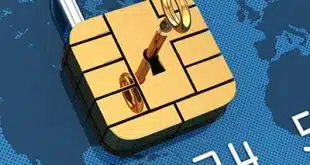If the flow of recessionary credit card spending could be likened to the Niagara River, MasterCard Inc. has gone over the falls while Visa is still just upstream at Grand Island. MasterCard on Thursday reported fourth-quarter drops of nearly 10% in U.S. credit card purchase volume and more than 6% in credit transactions against year-earlier tallies. But Visa, which reported its latest quarterly numbers late Wednesday, says respective payment dollar volumes and transactions on U.S. credit cards rose nearly 4% and 2%. The discrepancy can be mostly explained by the networks' different reporting periods. MasterCard disclosed numbers for its quarter ended Dec. 31. Visa reports operating statistics on a quarter-trailing basis, in this case for its fourth fiscal 2008 quarter ended Sept. 30, 2008. While not giving details, Visa chief financial officer Byron H. Pollitt Jr. said at an analysts' conference call Wednesday that U.S. credit dollar volumes fell 6% in the first fiscal 2009 quarter ended Dec. 31 and continued a similar decline in January. Changes in Visa's debit volumes however, remained in positive territory, though both networks report slower debit growth. Debit, which is capturing a bigger share of non-discretionary purchases such as groceries and gasoline, has grown far faster than credit in the U.S. in recent years. Debit is remaining resilient as consumers cut back on purchases of $1,000 or more for such items as big-screen TVs that they usually charge on credit cards, MasterCard president and chief executive Robert W. Selander said at MasterCard's analyst call this morning. “I would argue that consumers are also being more disciplined,” he said. MasterCard reported total U.S. credit, charge, and debit card purchase volume, excluding Maestro and other owned but non-MasterCard-branded transactions, of $210 billion in the fourth quarter, off 4.6% from $220 billion in 2007's last quarter. Fourth-quarter payment transactions still managed to increase 1.7% to 3.5 billion from 3.45 billion in the year-earlier period. Credit, as noted, proved to be the drag. Credit and charge card purchase volume fell 9.6% to $133 billion from $147 billion in 2007's fourth quarter, though transactions declined only 6.2% to 1.59 billion from 1.70 billion. That had the effect of reducing the average credit/charge card sale to $83.44 from $86.52 in the 2007's last quarter, a decline of 3.6%. The drop was bigger, 5.6%, from the third-quarter average credit ticket of $88.35. MasterCard's fourth-quarter debit card purchase volume grew 5.5% to $77 billion from the year-earlier period's $73 billion. Debit transactions rose 9.4% to 1.91 billion from 1.75 billion. The average fourth-quarter debit ticket of $40.31 was down 3.6% from $41.81 a year earlier. At Visa, total U.S. credit and debit payment volume for the quarter ending Sept. 30 hit $421 billion, up 8.6% from $388 billion in the year-earlier quarter. Transactions increased 9.2% to 7.68 billion from 7.04 billion. Visa's credit card payment volume totaled $213 billion, up 3.4% from $206 billion in the quarter ended Sept. 30, 2007, while transactions increased 2% to 2.36 billion from 2.31 billion. Thus, the average credit ticket grew 1.4% to $90.25 from $89.02 in the 2007 quarter. On the debit side, Visa payment volume rose 14.4% to $208 billion from $182 billion in fiscal 2007's last quarter, while payment transactions increased 12.7% to 5.32 billion from 4.72 billion. The average ticket rose at the same rate as credit, 1.4%, to $39.10 from the 2007's period's $38.55. Behind the networks' purchase numbers are some not-so-obvious forces. The huge drop in gasoline prices in late 2008 has had the effect of pulling down dollar volumes, but not transactions. Selander said gasoline represented 6% to 6.5% of U.S. purchase volume and 15% of transactions. Martina Hund-Mejean, MasterCard's chief financial officer, added that “definitely around 25%” of the 4.6% decline in combined fourth-quarter credit and debit purchase dollar volume came from lower gas prices. At Visa, chairman and CEO Joseph Saunders told analysts that, “gas accounts for about 10% of our total payment volume across both [credit and debit] categories.” Travel spending, meanwhile, has slipped in dollar volume, but travel transactions are up, according to MasterCard. The reason: the proliferation of low-dollar airline transactions, such as baggage charges, in addition to the actual ticket. “When you go and travel on an airline these days you get charged for all sorts of wonderful extra things,” said Hund-Mejean. Visa and MasterCard executives said they are keeping a tight lid on expenses as they ride out the recession. “If things begin to turn around even modestly we have structured ourselves to be poised to take advantage of it in a serious way,” Saunders said. MasterCard has cut travel-and-entertainment spending by 48%, advertising and marketing by 33%, and personnel costs by 3%.
Check Also
Wirex Travel Debuts and other Digital Transactions News briefs from 3/27/25
The payments platform Wirex Ltd. has launched Wirex Travel, a travel-booking utility offering discounts and cashback to …





